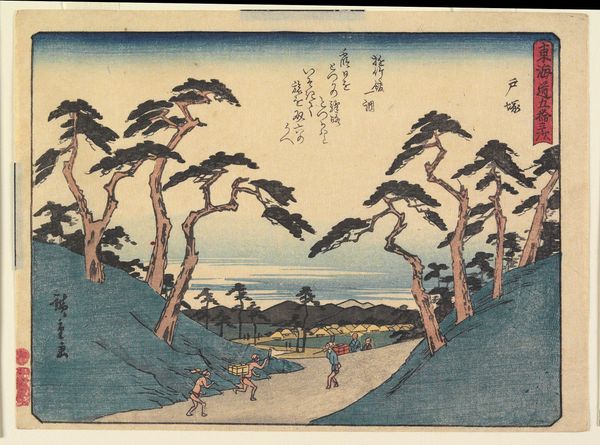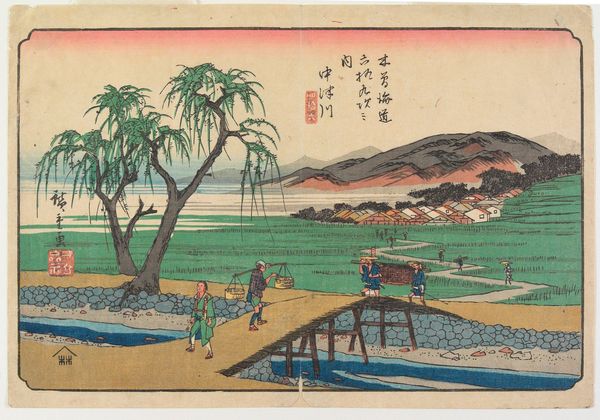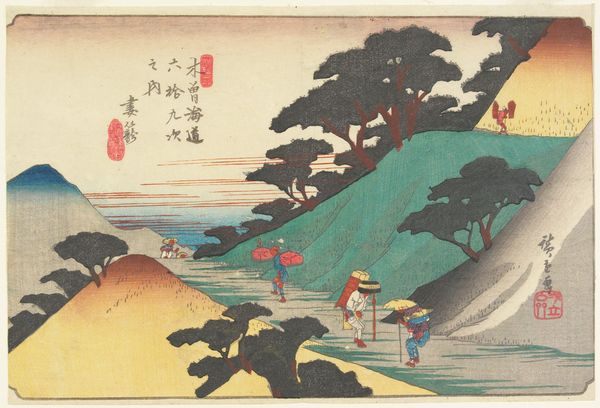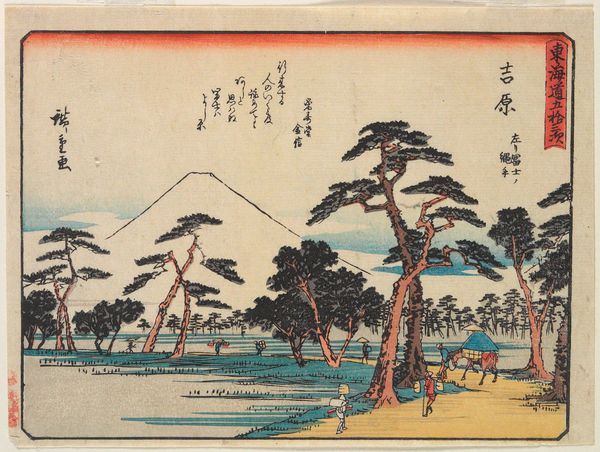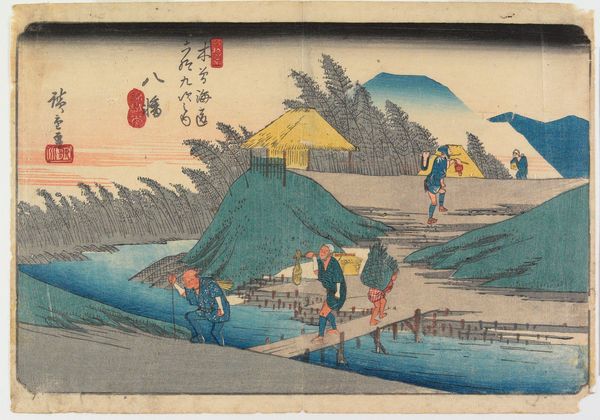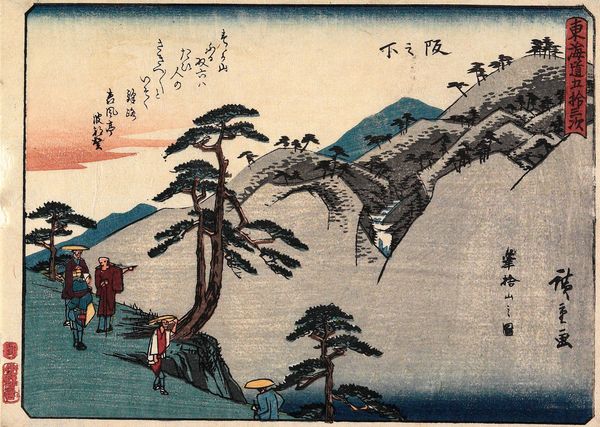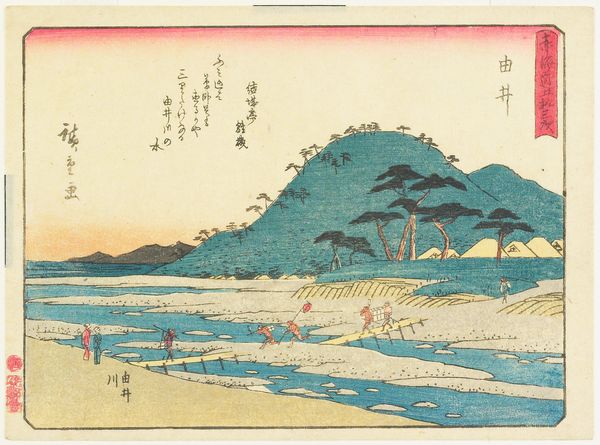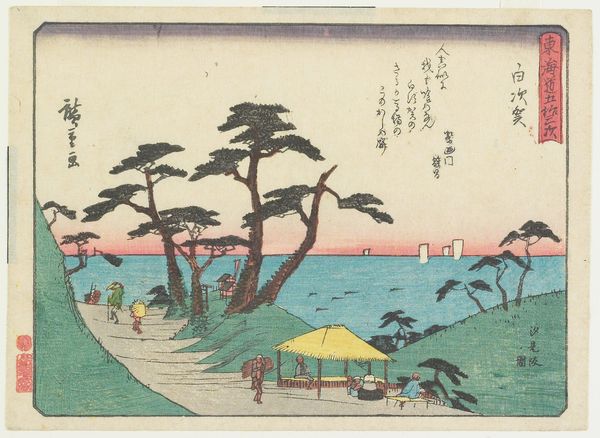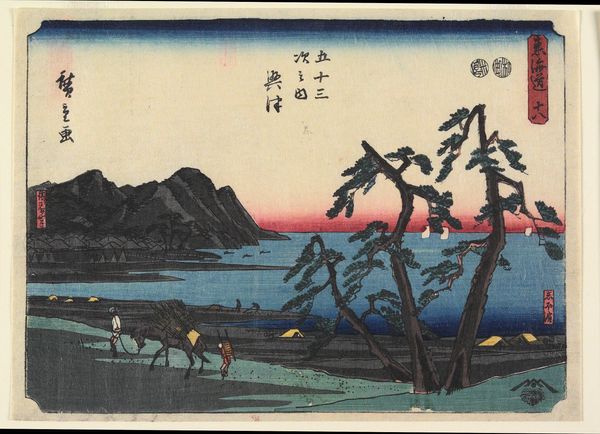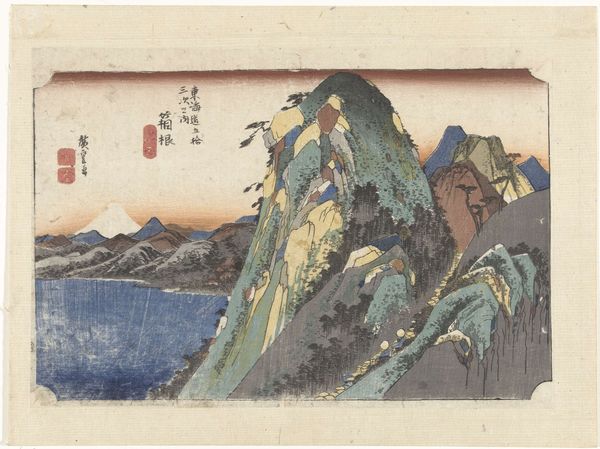
Dimensions: 9 × 14 in. (22.8 × 35.5 cm) (image, horizontal ōban)
Copyright: Public Domain
Editor: We're looking at "No. 12" by Utagawa Hiroshige, a woodblock print made around 1835 to 1838, currently at the Minneapolis Institute of Art. It's so serene, almost dreamlike. How do you interpret this work? Curator: The beauty of Hiroshige's ukiyo-e lies in its distillation of emotional essence through established iconography. Observe the bridge – a symbolic connector between realms, here linking the mundane world with perhaps something more spiritual. Notice the figures upon it. Editor: They're small, almost like ghosts. Curator: Precisely. They're not individualized; rather, they represent humanity in transit, engaged in the cycles of daily life, yet perpetually framed by nature's immensity. And Mount Fuji in the distance… What does it evoke? Editor: It feels constant, eternal, compared to the ephemeral nature of everything else. A grounding force? Curator: Indeed. Fuji is more than just a mountain; it’s a national and spiritual icon. Its presence reinforces ideas of permanence and the sublime, acting as a silent witness to human activity. The water’s movement and the figures suggest transience. Editor: I see how the whole image balances the temporary with the enduring, even down to the colours. The blue of the water next to that sunset's soft yellows. Curator: The carefully chosen palette is deliberate. Colour itself is symbolic in Japanese prints. They enhance the emotional tone, shaping the viewer's perception. Editor: That’s a really insightful reading. I hadn’t considered how all these layers of meaning interact. Curator: Hiroshige offers a lens through which we view not just a landscape, but also a reflection on the human condition, viewed across the lens of Japanese cultural identity.
Comments
No comments
Be the first to comment and join the conversation on the ultimate creative platform.

